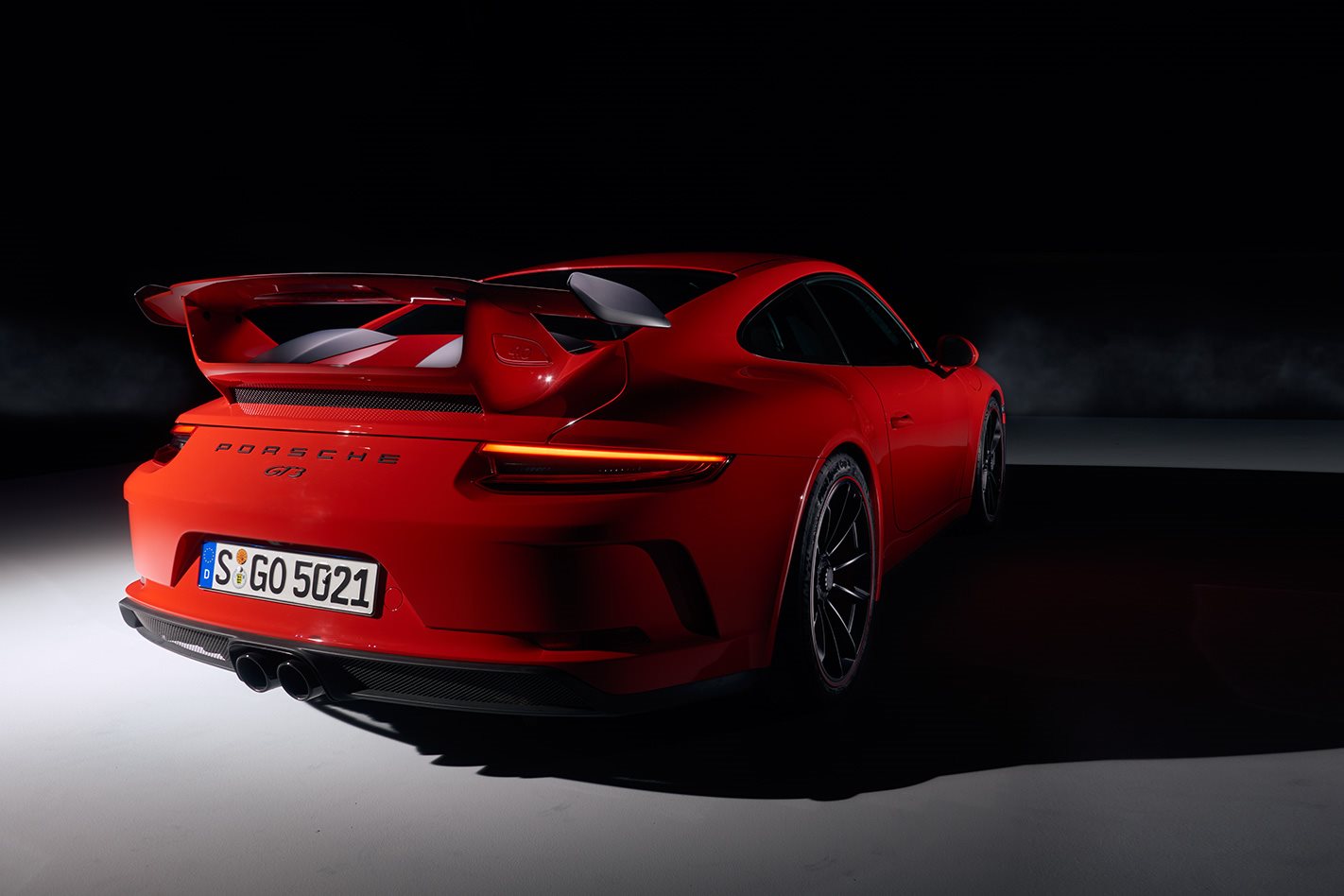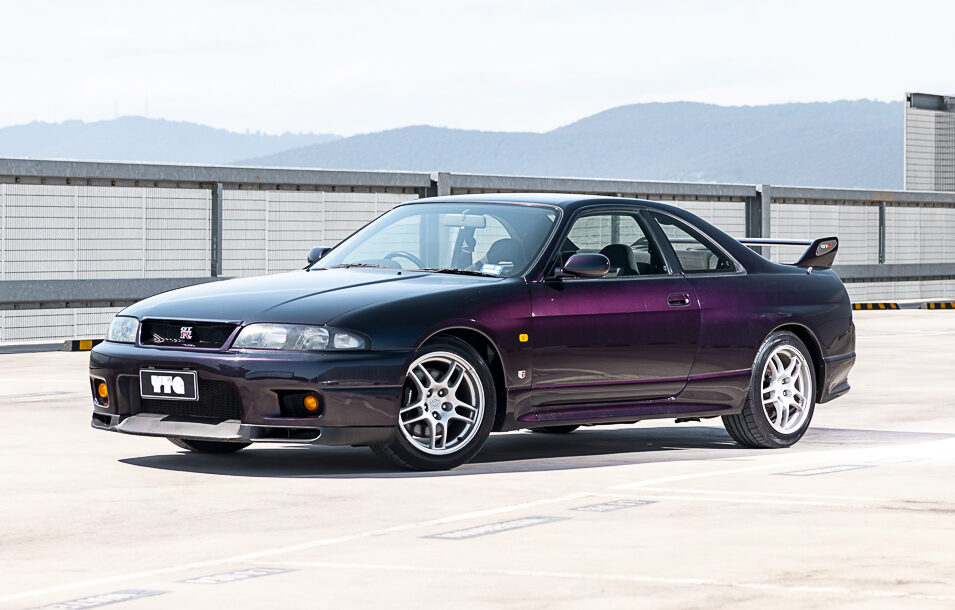I can hear the famous flat-six wail in the distance. Despite being on the other side of the hill, it’s easy to hear the ultimate free-breathing boxer engine (for now, at least) slicing through the old part of town long before the well-known silhouette comes into focus. Although when the new 991.2 911 GT3 does come into view, it’s a gut-wrenching disappointment.
Andreas Preuninger, head of Porsche’s GT division, arrives in a patchwork pre-production prototype with different wheels front and rear, ugly black cladding and plenty of last-minute camouflage to disguise the final design. Inside, the mule is no less of a mess, with wires and dashboard coverings aplenty.
“We’re a couple of weeks behind with the build-up,” Preuninger admits to MOTOR. “Which explains why I had to pick a very early vehicle. It sounds great and drives well, but the cosmetics are way off.”
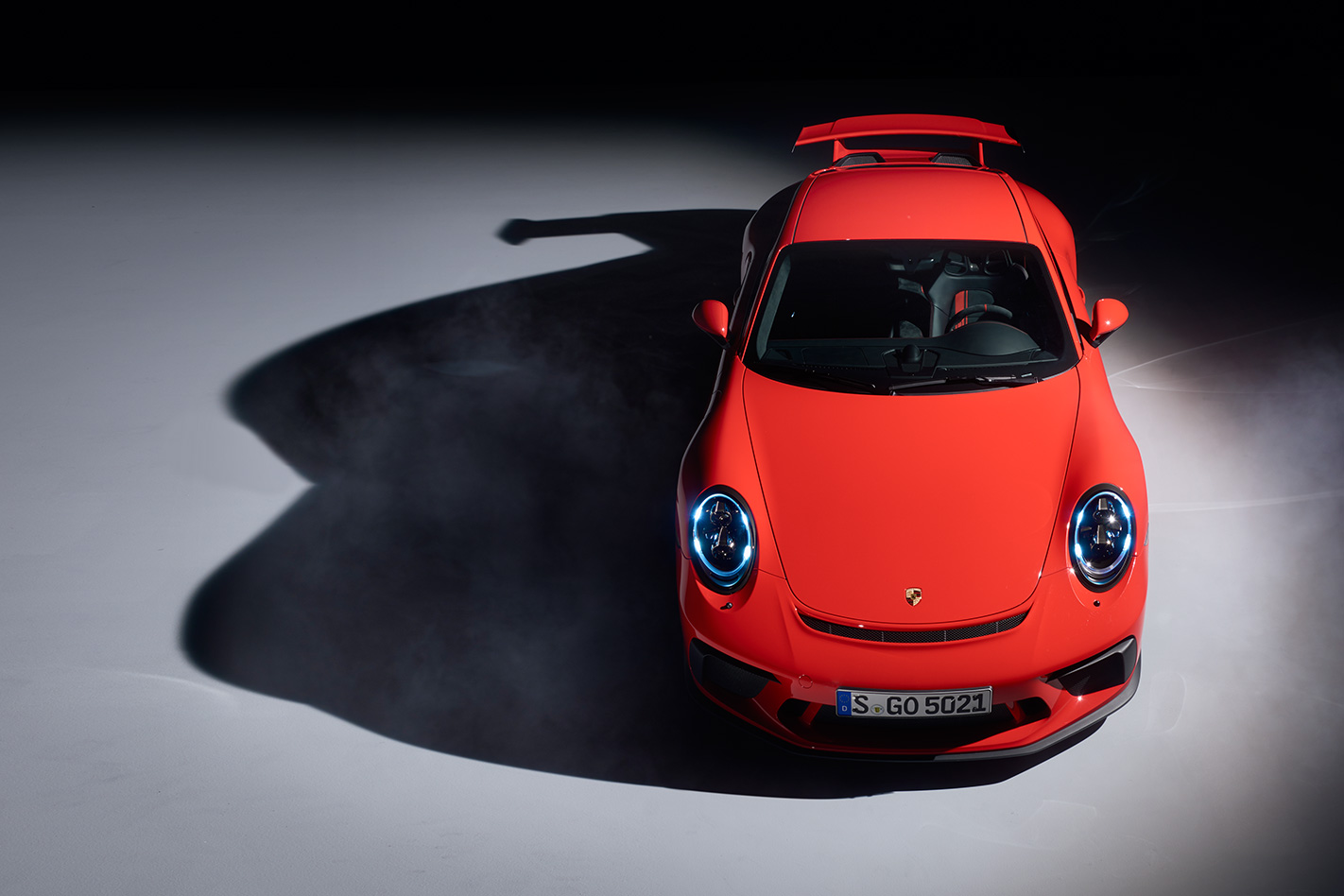
Extensive wind-tunnel testing has shaped the widebody rear, taken from the fat-hipped Carrera 4, which features LED lights, plastic mesh air vents and even bigger tailpipes framed in a charcoal apron. A pair of black, ram-style intake scoops reduce back pressure and feed plenty of fresh air to the hungry naturally-aspirated engine.
Matching the aerodynamic efficiency of the feisty rear is the restyled front end. It incorporates a pair of vertical air curtains, three extra-large intake openings and a protective rubber lip. The revised aerodynamic package reduces drag while also increasing downforce by 20 per cent, for a maximum of 125kg at 300km/h.
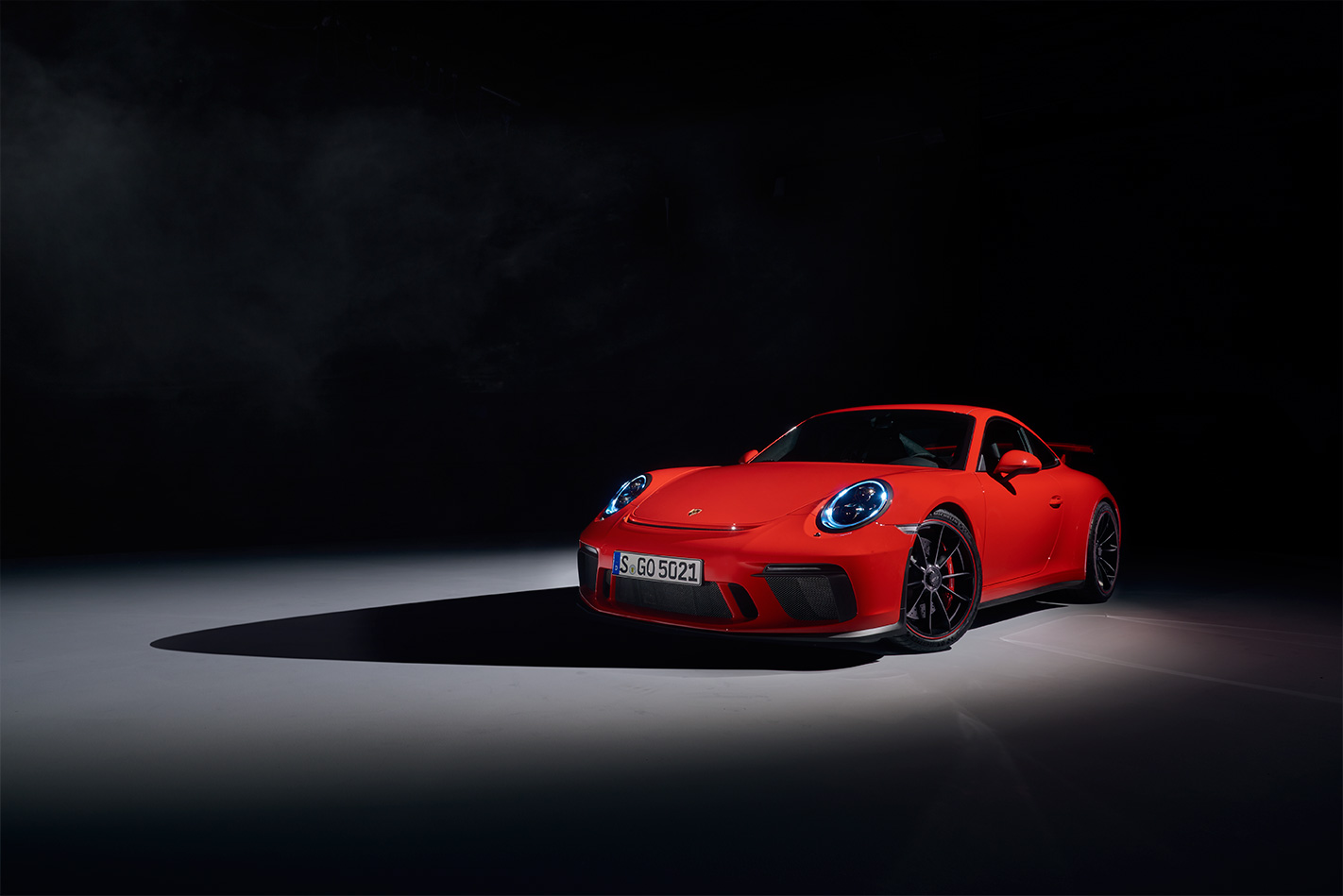
There are four different types of seats available, ranging from fully electric comfort pews to weight-saving carbon fibre racing buckets. Alcantara and red stitching abounds, but it’s not stripped out like the hardcore RS.
The suspension has been lowered by 25mm for the new GT3. The tyres are unchanged, sticking with grippy Michelins (the 991 GT3 had Pilot Sport Cup2s) or Dunlop Sport Maxx race rubber measuring 245/35 up front and 305/30 at the rear. Centre-lock 20-inch multi-spoke wheels also remain, and can be optioned with ‘red walls’ at extra cost.
The standard steel brakes still use 380mm rotors front and rear, but the optional Porsche Ceramic Composite Brake (PCCB) discs now measure 410mm up front and 390mm at the back.
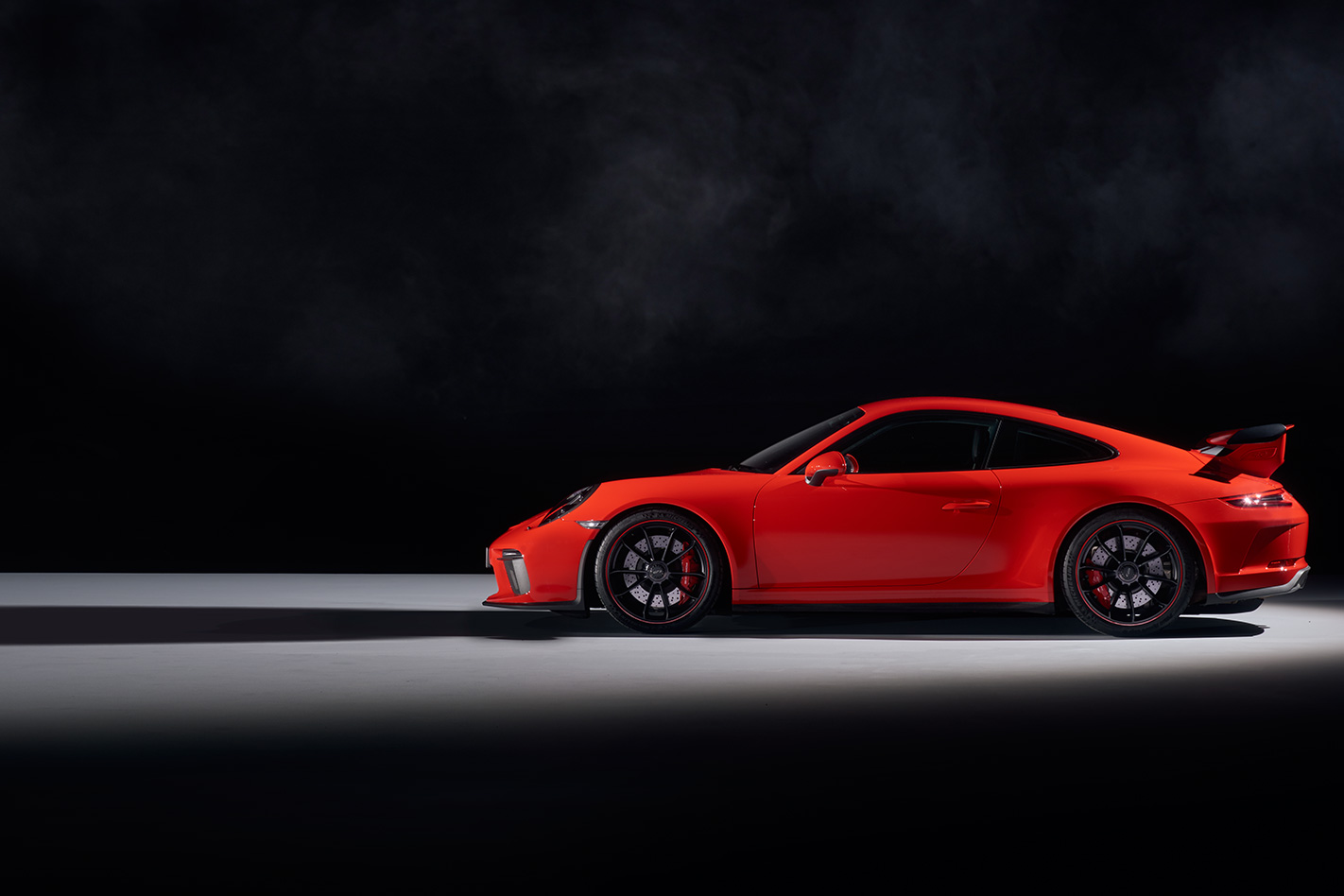
Introduced in the limited edition 911 R, the outrageous demand for that car and similarly manual-only Cayman GT4 has led Porsche to reintroduce three pedals as a no-cost option. So, which gearbox to choose? “It is quite simple”, answers Preuninger.
“The seven-speed PDK version is 0.5sec quicker off the mark and thus the better choice for track-day use. But the manual gearbox makes for a more emotional 24/7 driving experience.”
At a claimed 3.9sec 0-100km/h, it’s certainly not slow, and the GT3 is capable of almost 320km/h equipped with either gearbox.
Apart from the number of pedals in the footwell, the other difference between the manual and PDK variants regards the limited-slip differential, with the manual using a mechanical item while the PDK’s is electronically-controlled.
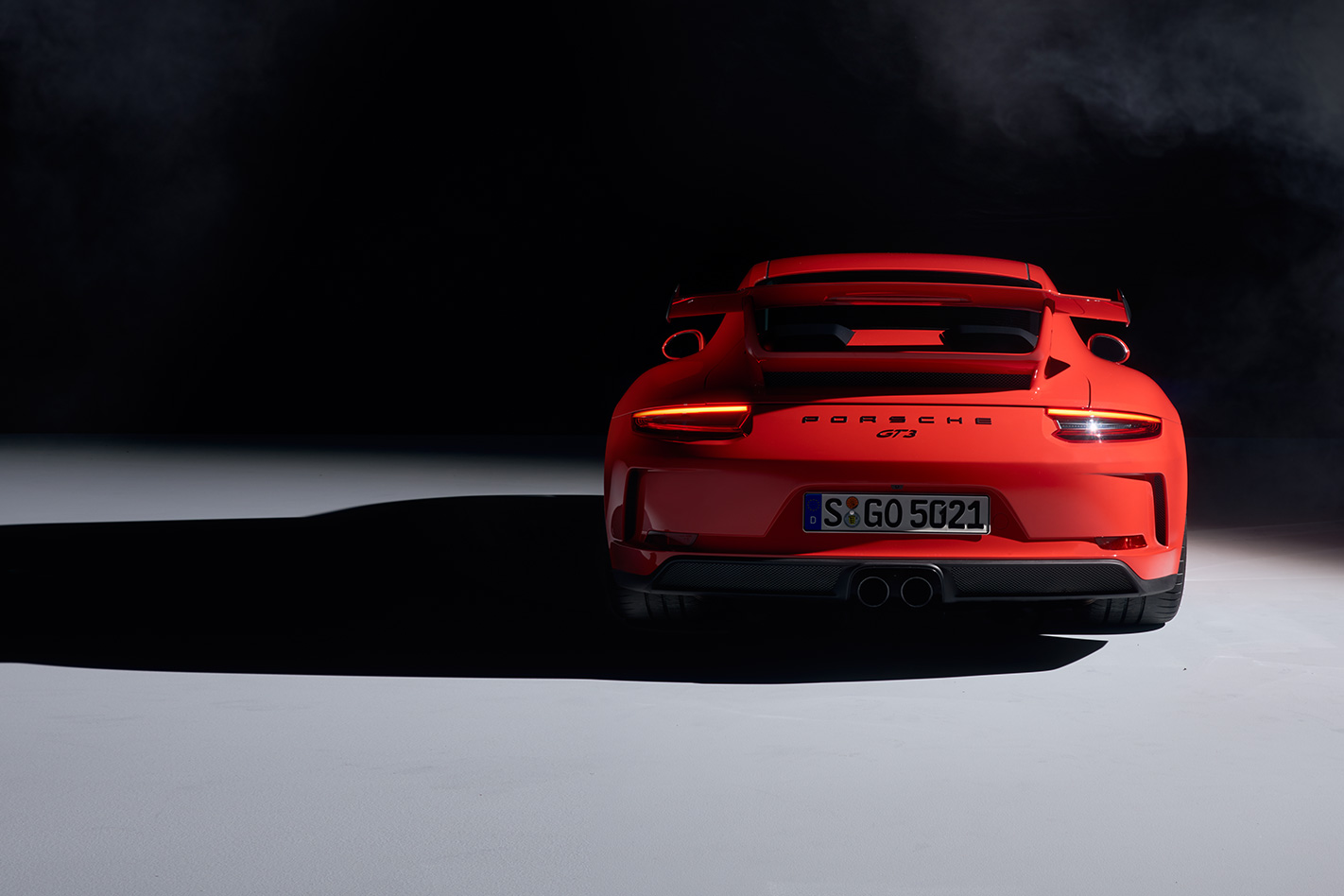
The 4.0-litre flat-six is ostensibly the same as that fitted to the new GT3 Cup car. Preuninger and his team of boffins pulled plenty of tricks out of the bag to increase the outputs of the high-revving, naturally-aspirated engine.
The list of new or modified parts includes pistons, bearings, crank case, lubrication and softer valve springs. Weight savings and friction reduction helps the engine spin to 9000rpm, with the 368kW peak arriving at 8250rpm.
Maximum torque is now 460Nm (up 20Nm), produced 250rpm earlier at a still-high 6000rpm. A larger intake plenum, however, with two butterfly valves instead of one, significantly boosts mid-range urge by up to 35Nm.
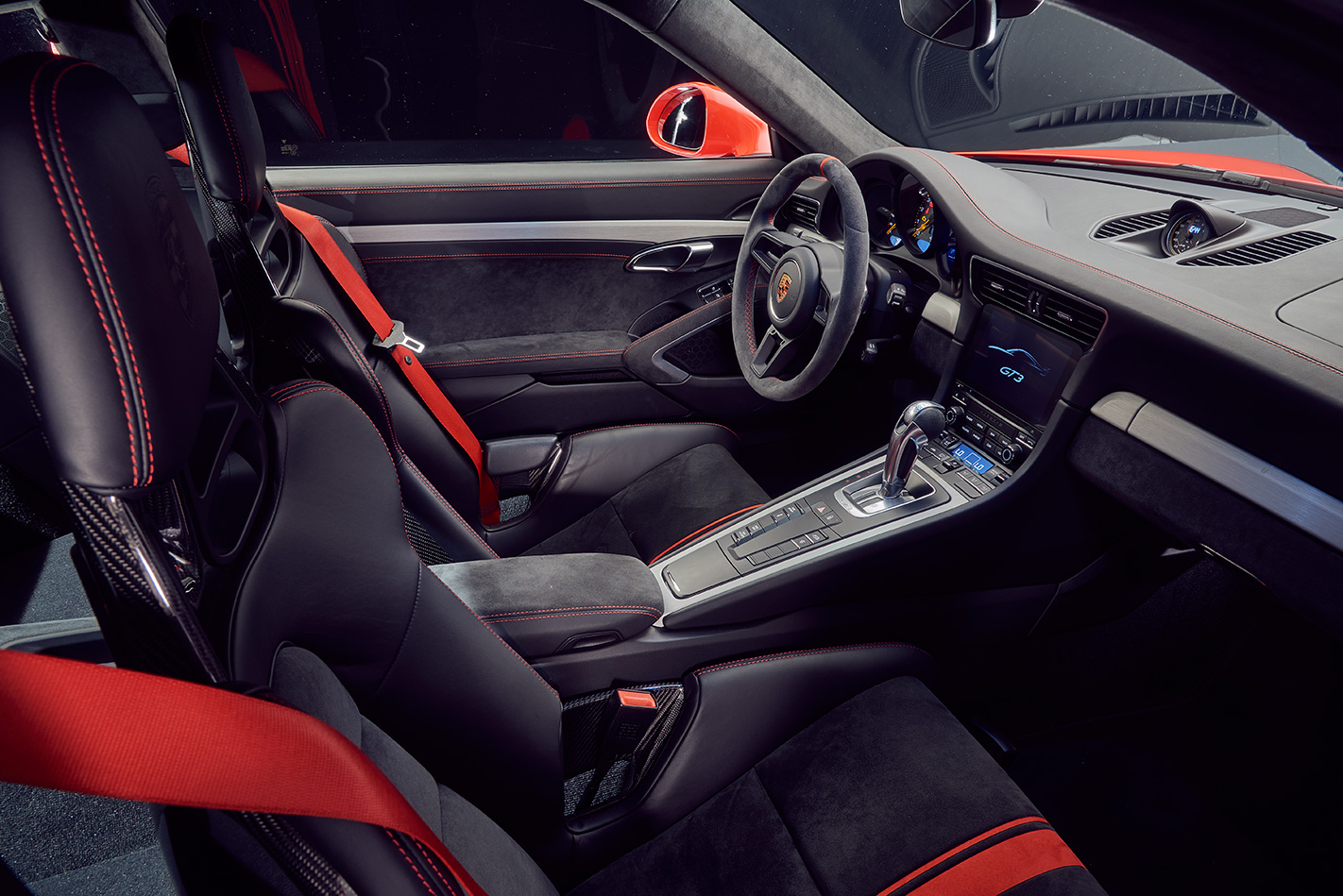
Inside, Braun twists the key, blips the throttle, grins and looks at me. “The new engine sounds different, doesn’t it? It’s different from a 911 GTS, but also different from the previous GT3, which is no surprise considering we are listening to a heavily revised and substantially improved powerplant.
And while we’re at it, check out the transmission at idle speed which is hush-quiet – unlike the old ‘box saddled with a single-mass flywheel. But when you can change gears at up to 9000rpm, the dual-mass application is a must.”
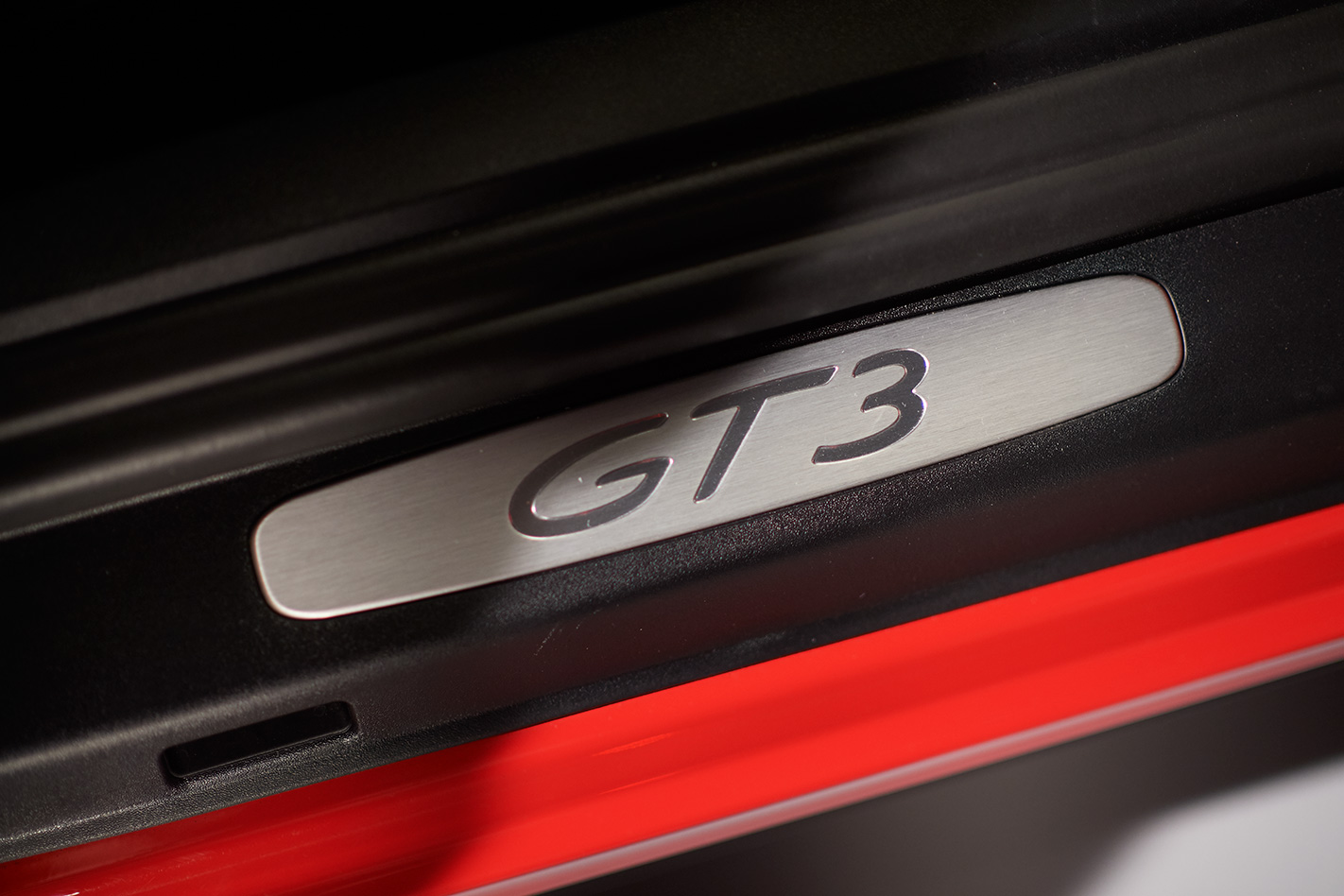
“Going fast is all about confidence,” says a smiling Braun. “True to our brief, the new GT3 fuses instant feedback, total clarity and absolute trust.”
While the manual 911 Carrera is stuck with an excessively long and relatively stubborn seven-speed ‘box, the GT3 receives six aggressively staggered forward ratios. Hard acceleration is thrilling in three parts. Furious take-off loads up the clutch, the tyres and the driver’s left foot because timing is of the essence and second gear beckons almost faster than you can react.
While it takes a decent initial throttle percentage to send revs skyward, the switchable intake plenum triggers stage two at 4000rpm, from where it rockets up to 6000rpm. For the first time, Porsche’s atmo six feels to approach its turbocharged sibling in terms of punch and urge.
It may matter to only a few customers, but it is nonetheless worth noting that the 300km/h threshold has become more easily attainable in the 2017 model, which has longer and more muscular legs.
“You are almost always going that little bit faster in the new GT3, and at this level it takes unerring stability and ceaseless feedback to build up blind faith,” says Braun. “The car must cope with any surface- or weather-induced irritation in the most confidence-inspiring manner. The keys to this reassuring composure are sufficiently compliant suspension and, of course, the stability-enhancing rear-wheel steering.”
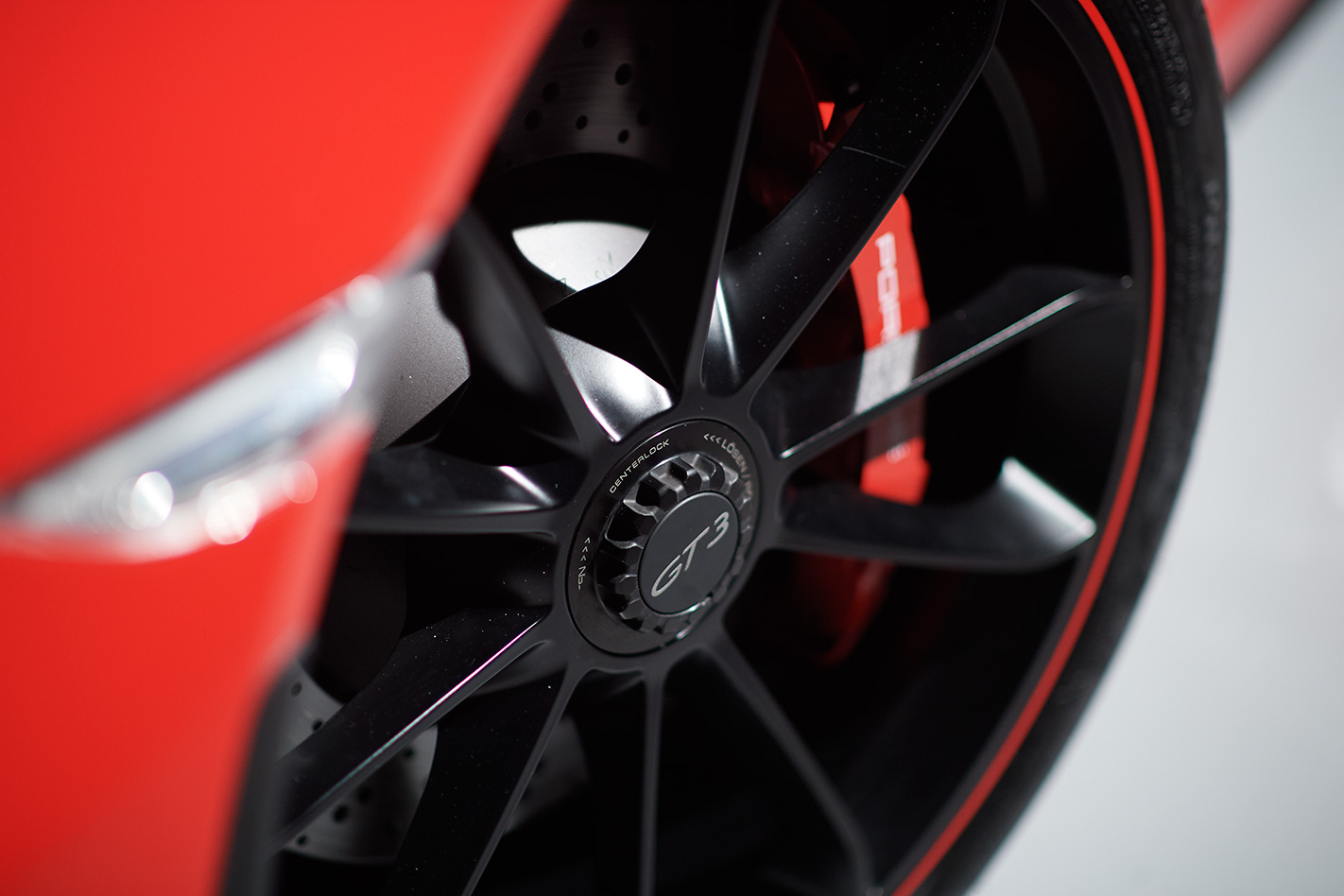
Upon arriving at the Black Forest the tempo immediately changes. It’s an unspoken shift, but the pace changes from fast to furious. I sit, watch, listen and enjoy.
We’re hard on the throttle with ample revs before jumping hard on the impressive brakes, all the while with barely a smidgeon of oversteer through the tighter bends. The standard rear-wheel steering seems to shrink the wheelbase through the challenging twisties of this road, too.
“When you are in a real hurry, you may even change gears without lifting off,” reveals Braun. “The secret to this new talent is a momentary adjustment of the ignition timing.”
At what must be close to ten-tenths, rapid lift-off still feels more like a pat than a kick, the trimmer valve gear working wonders for the throttle response. The manual may lose half-a-second to the PDK model on the 0-100km/h sprint, but the reward is notably more involvement and interaction.
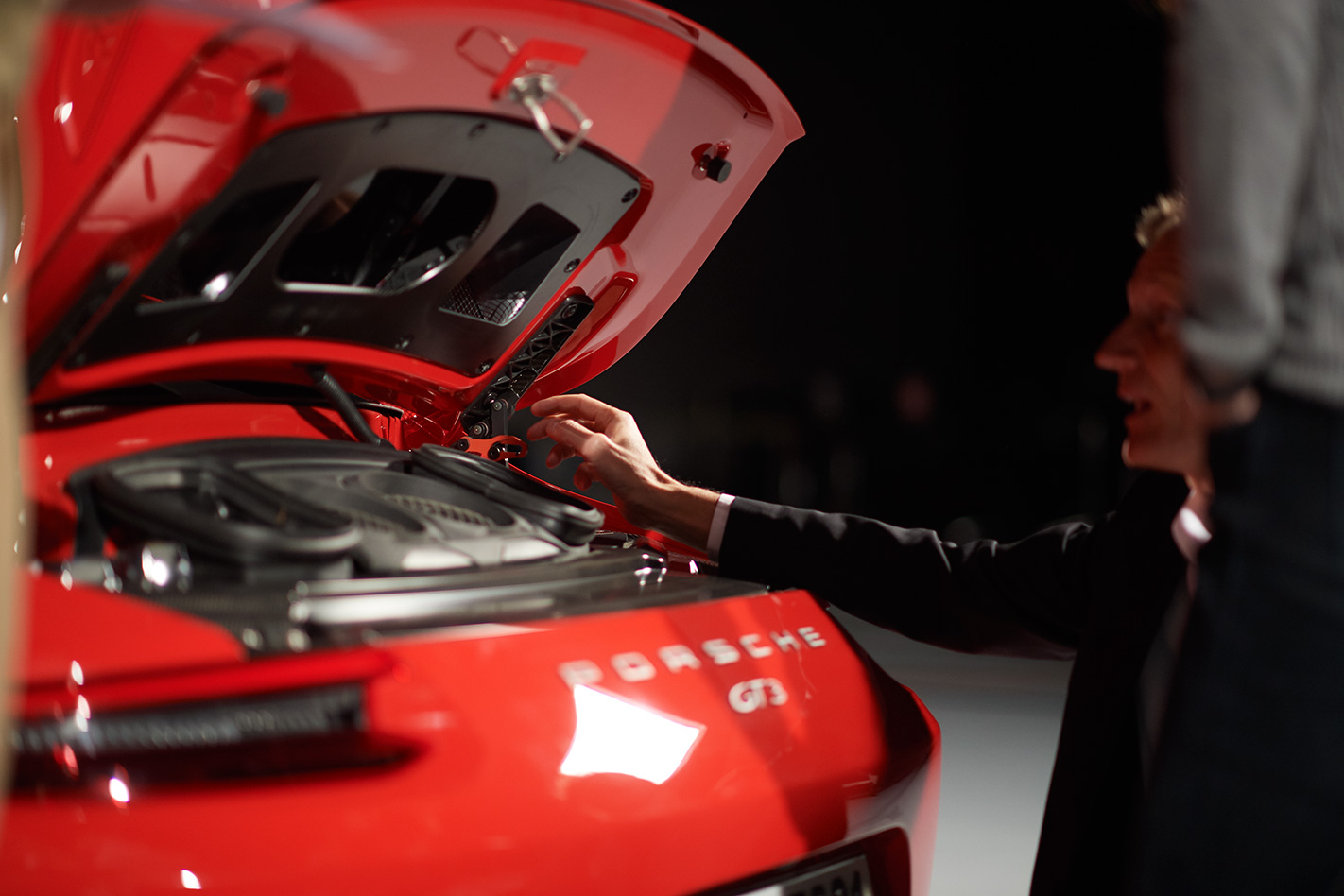
“The pick-up from low engine speeds is strong even with the transmission left in a high ratio,” says Braun. Accelerating hard at 2500rpm in fifth, we run out of road before the flat six runs out of revs. The engine plays a matching soundtrack, unfurling the final 3000rpm to redline and sounding more mechanical and intense than the previous generations.
“No filters,” the wheelman promised, and the 24-valver on steroids delivers, unleashing power, an extra 500rpm and a rortier exhaust note, shift after shift.
Dry tarmac and little traffic set the scene for the final stage of a memorable drive – a final blast to determine if the 991.2 is an RS in disguise, a more extreme GTS or an extroverted 911 R. It is also the last chance to see where exactly the new GT3 stands in this company as far as road-holding, breakaway behaviour, ride comfort, handling prowess and controllability are concerned.
If our outing is anything to go by, I would describe the latest effort as a more emotional, yet softer-edged GT3. It’s ultimately a more accessible and more involving piece of kit that’s both special and a perfectly docile sports car.
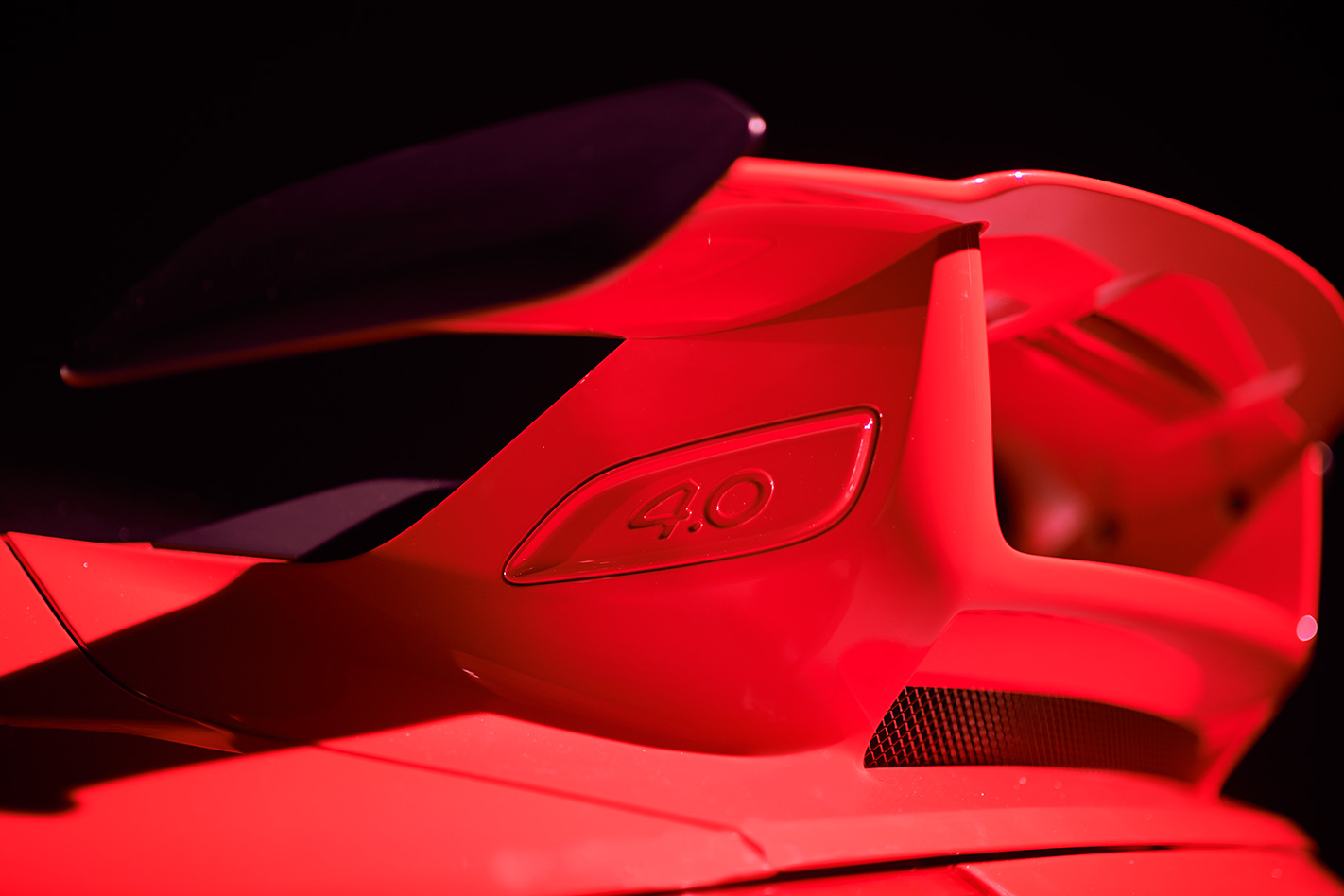
“While the steering is now almost as accurate as a surgeon’s scalpel, the dynamic engine mounts effectively cushion the faintest trace of lift-off oversteer as well as over-enthusiastic tip-in.” Sport mode adds a pinch of salt to the GT3 dish, but in true Porsche tradition, the steering weight remains unchanged.
Carbon ceramic brakes, bucket seats and the Clubsport pack, complete with roll cage and fire extinguisher, are just about the only options which would significantly improve the car’s track-day performance. And for daily use, the electric front axle lift is essential to guard that vulnerable spoiler lip.
Ultimately, however, if you want one, don’t muck about. Get on the waiting list now. Although Porsche claims that the new GT3 is not a limited-edition model, the production capacity available is limited by the availability of parts, the demand for other 911 iterations and the need to prepare the factory for the arrival of the brand-new 992.
According to an insider, a good portion of the estimated 3000 to 4000 GT3 units were already spoken for before the car’s public debut at the Geneva Show. That’s what anticipatory fascination, and an incredibly talented product, can do to your bottom line.
BODY: 2-door, 2-seat coupe DRIVETRAIN: rear-drive ENGINE: 3966cc flat-6, DOHC, 24v POWER: 368kW @ 8250rpm TORQUE: 460Nm @ 6000rpm TRANSMISSION: 6-speed manual 0-100KM/H: 3.9sec (manual, claimed) WEIGHT: 1420kg BRAKES: 380mm ventilated discs 6-piston calipers (f); 390mm ventilated discs, 4-piston calipers (r) WHEELS: 20.0 x 9.0-inch (f); 20.0 x 12.0-inch (r) TYRE SIZES: 245/35 ZR20 (f); 305/30 ZR20 (r) TYRES: Michelin UHP Sport/Dunlop Sport Maxx PRICE: $327,100 PROS: Manual ‘box; performance, dynamics CONS: Demand could mean limited supply

